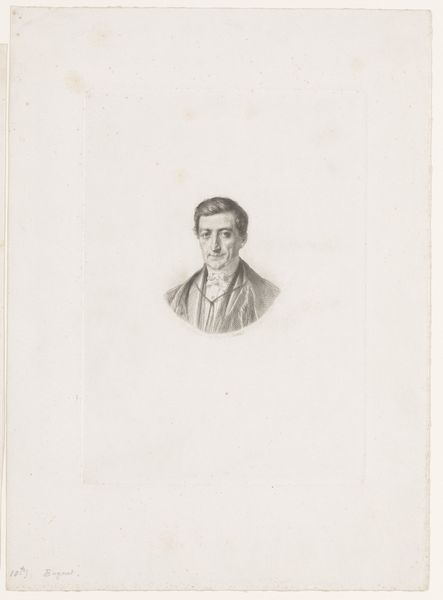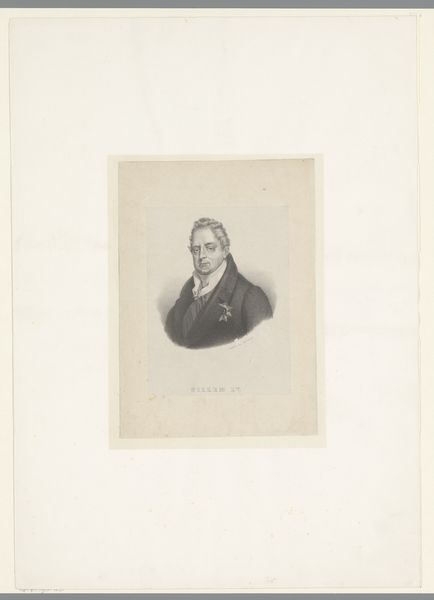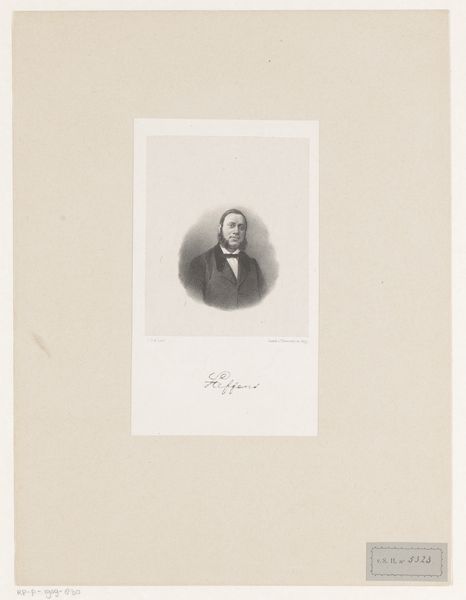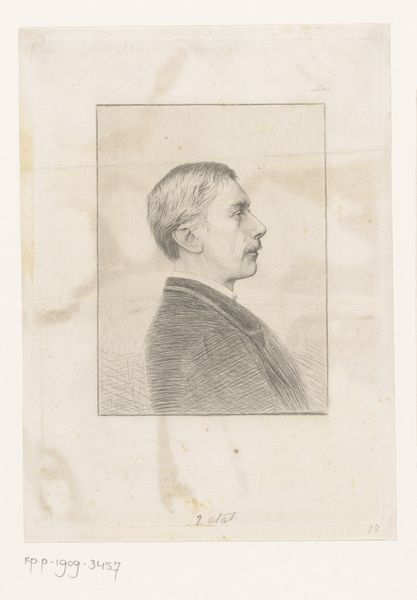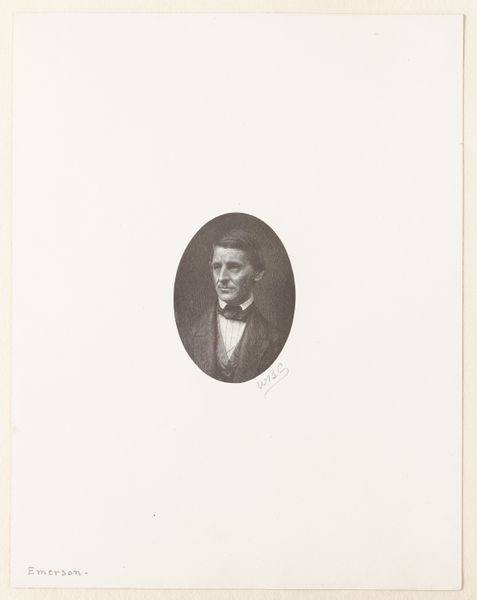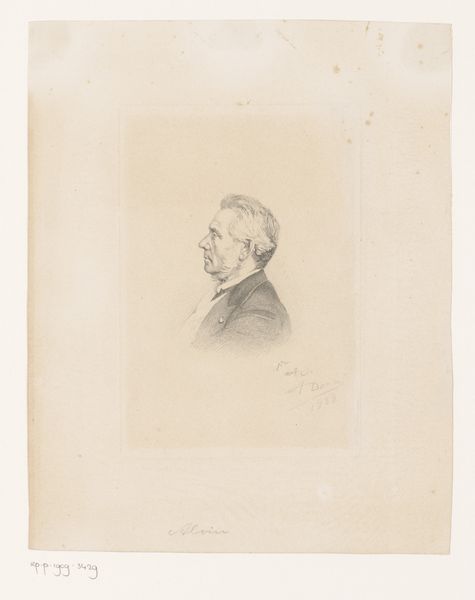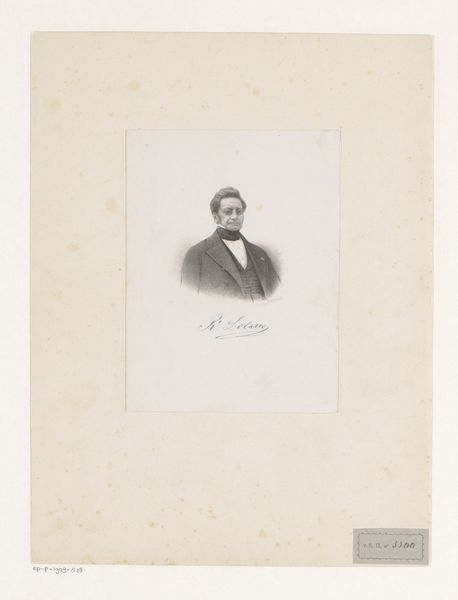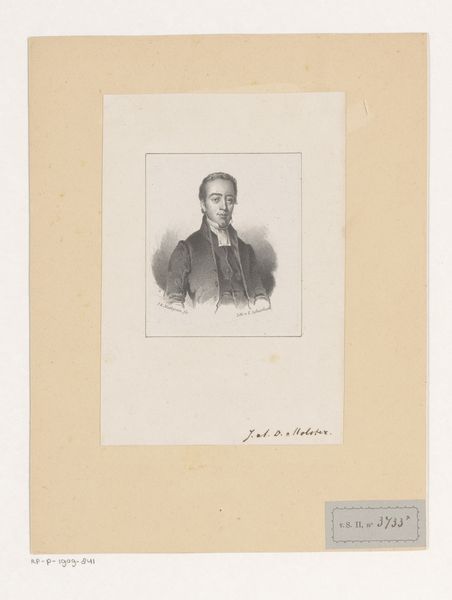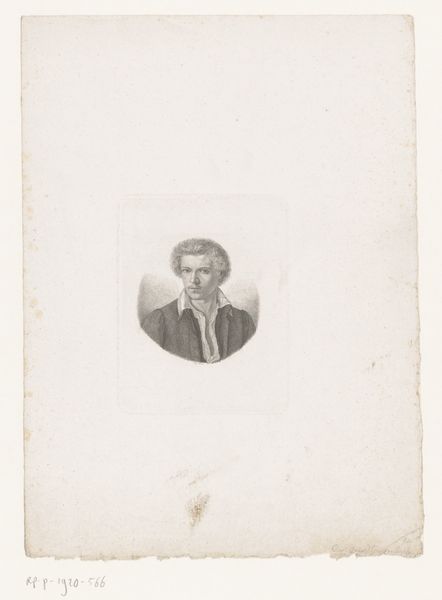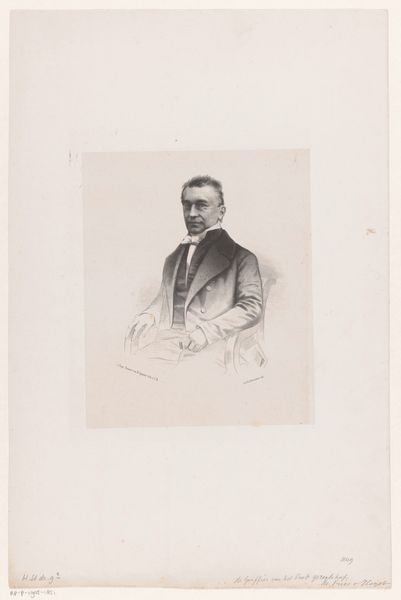
Dimensions: height 249 mm, width 178 mm
Copyright: Rijks Museum: Open Domain
Editor: So, here we have a print entitled "Portret van een onbekende man, mogelijk Bocquet," made by Georges Montenez around 1895, rendered with pencil and pen, and maybe some watercolor, judging from the tones. It has a serious and sort of scholarly feel to it. What do you see in this portrait? Curator: What strikes me is how this work participates in the late 19th-century rise of the individual within a rapidly modernizing society. Photography democratized portraiture, but drawings and prints retained an aura of artistic interpretation and a connection to the hand. How might the presumed profession of Bocquet, as the possible sitter, influence the public perception of this work? Editor: I suppose a portrait of a scholar or professional might lend a sense of respectability or intellectualism to the artwork, but without knowing who he is, it's hard to say for sure. The inscription, handwritten, it’s also an essential feature, it gives more credibility and reality, doesn’t it? Curator: Absolutely. The presence of the artist's signature and the date inscribes this artwork within a specific socio-historical moment. Consider the institutions that would have displayed such a work. Was it destined for a public exhibition, a private collection, or perhaps even scientific documentation? And what was the cultural value ascribed to portraying men of his potential status? Editor: That's fascinating. I hadn't considered the social implications of displaying portraits like this. It's like this artwork exists not just as an image, but also as a statement of a certain class being visible to the public at large, like a sociological sample. Curator: Precisely! It is crucial to examine art as embedded within webs of power, representation, and historical narrative. How do such pieces then shape public perception and perpetuate cultural values of the epoch? Editor: Well, it's definitely given me a lot to think about when looking at portraiture, moving beyond just aesthetic considerations. Curator: Indeed. It enriches the experience when we also interrogate its place in a bigger picture of social history.
Comments
No comments
Be the first to comment and join the conversation on the ultimate creative platform.
